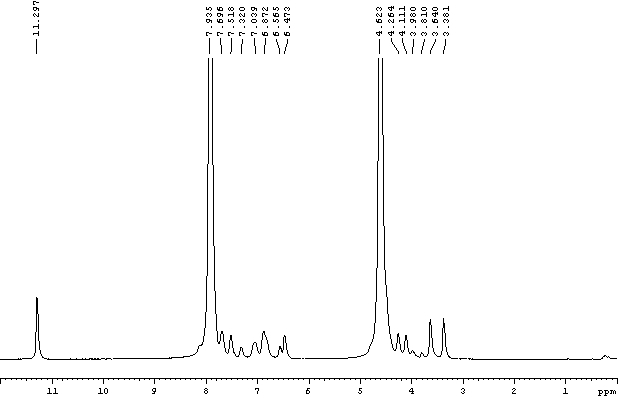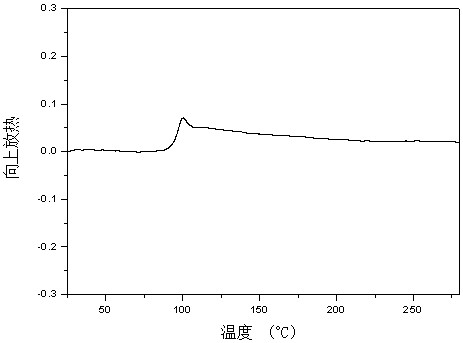Polyester-polycarbonate copolymer, polyester product, its preparation method and application
A polycarbonate and copolymer technology, applied in the polymer field, can solve the problems of inability to guarantee the safety of users' lives and property, insufficient glass transition temperature of polyester, and weak flame retardant performance.
- Summary
- Abstract
- Description
- Claims
- Application Information
AI Technical Summary
Problems solved by technology
Method used
Image
Examples
preparation example Construction
[0036] A kind of preparation method of polyester-polycarbonate copolymer provided by an aspect of the embodiment of the present invention comprises:
[0037] The first mixed reaction system comprising the first dibasic alcohol, dimethyl carbonate and / or diphenyl carbonate, dibasic acid and / or its esterification, the second dibasic alcohol and esterification or transesterification catalyst React at 160-260°C to form intermediate products;
[0038] Making the second mixed reaction system comprising the intermediate product, stabilizer and polycondensation catalyst react at 180-300°C under a certain vacuum condition (for example, lower than 300Pa) to obtain a polyester-polycarbonate copolymer;
[0039] Described first dibasic alcohol adopts the phosphorus-containing dibasic alcohol shown in following formula I:
[0040]
[0041] Formula I
[0042] Among them, R 1 , R 2 , R 3 , R 4 At least independently selected from hydrogen, C1-C6 alkyl, C1-C6 alkoxy, halogen atom (suc...
Embodiment 1
[0091] Example 1 Add dimethyl terephthalate, phosphorus-containing compound P4 (formula II), dimethyl carbonate, ethylene glycol, and anhydrous zinc acetate to the reactor in a molar ratio of 1:0.1:0.2:2.1:0.001 In, heat up to 180°C, react for 4.0h, then add antimony trioxide with a molar weight of dimethyl terephthalate of 1‰, triphenyl phosphate with a molar weight of dimethyl terephthalate of 1.5‰, vacuum degree 25Pa , heated up to 280°C, reacted for 3.5h, and the obtained final product 1 H-NMR such as figure 1 As shown, it is polyethylene terephthalate dimethyl carbonate glycol phosphorus-containing glycol copolymer, and its structure is shown in formula III. The glass transition temperature of the final product is 95°C, and the DSC spectrum is as follows figure 2 shown, in nitrogen T 5% The thermal weight loss temperature is 414°C, and the TGA spectrum is as follows image 3 Shown, flame retardant performance test V1 level.
[0092]
[0093] Formula III (m, n, j,...
Embodiment 19
[0109] Example 19: The polyethylene dimethyl terephthalate carbonate phosphorus-containing glycol copolymer obtained in Example 1 was melt-extruded and granulated in a co-rotating twin-screw extruder. The working parameters of the co-rotating twin-screw extruder are as follows: the barrel temperature is 265°C-275°C, and the die head temperature is 275°C-285°C. Then use the injection molding machine to inject it into a standard sample. The parameters of the injection molding machine are: the barrel temperature is 270 ° C ~ 285 ° C, the pressure holding time is 10s, and the standard sample is tested according to ASTM D638-08 and GB / T1843-2008. Test results showed that the tensile properties, elongation at break and notched impact strength of the standard sample were ideal.
PUM
| Property | Measurement | Unit |
|---|---|---|
| thickness | aaaaa | aaaaa |
| glass transition temperature | aaaaa | aaaaa |
| glass transition temperature | aaaaa | aaaaa |
Abstract
Description
Claims
Application Information
 Login to View More
Login to View More - R&D
- Intellectual Property
- Life Sciences
- Materials
- Tech Scout
- Unparalleled Data Quality
- Higher Quality Content
- 60% Fewer Hallucinations
Browse by: Latest US Patents, China's latest patents, Technical Efficacy Thesaurus, Application Domain, Technology Topic, Popular Technical Reports.
© 2025 PatSnap. All rights reserved.Legal|Privacy policy|Modern Slavery Act Transparency Statement|Sitemap|About US| Contact US: help@patsnap.com



